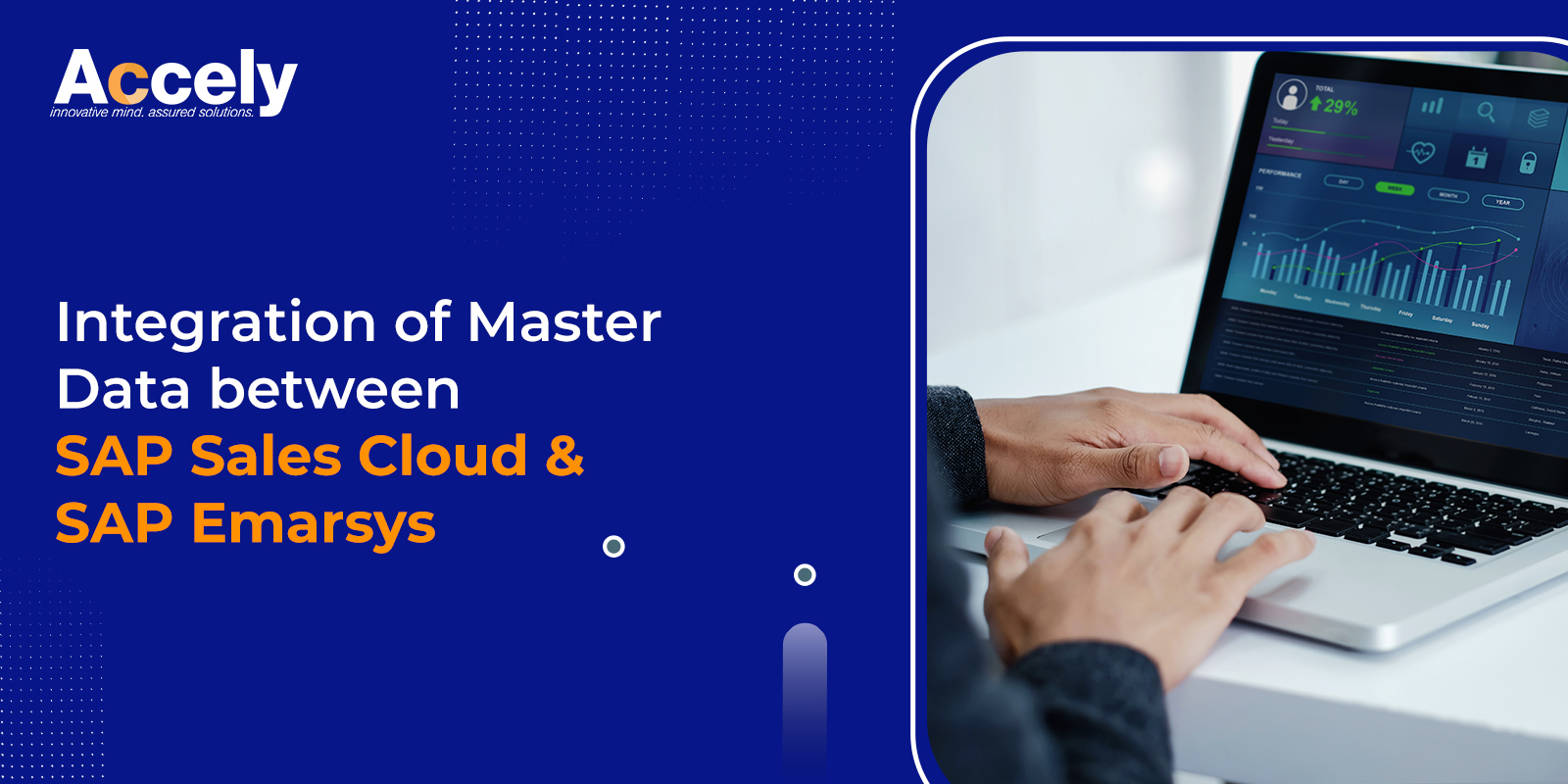Integration of Master Data between SAP Sales Cloud & SAP Emarsys
03-Jan-2023About ten years ago, separate marketing, digital sales, and eCommerce solutions were widespread. However, the commercial environment has altered. To deliver rapid customized services across all available channels, B2B and B2C businesses nowadays rely on integrated systems that can comprehensively absorb consumer information, making each client “visible” to numerous departments at once.
With the SAP CX (Customer Experience) suite, you can quickly provide cutting-edge customer experiences while taking care of every area of company administration in the context of the master data integration between the two CX solutions mentioned above, the SAP Emarsys Customer Engagement and SAP Sales Cloud. SAP provides the SAP Account Engagement for an “out of the box” data integration.
This blog article outlines a straightforward extension scenario for the master data interface between SAP Emarsys Customer Engagement and SAP Sales Cloud. The situation is made actual using an SAP Cloud Integration – Integration Flow. Let’s check it out in the following sections of the blog.
SAP Customer Experience – Your Gateway to Seamless Integration
Processes for sales and service are made easier by integrating SAP Sales Cloud and Service Cloud (SAP C4C) with SAP Cloud Integration. When a new client registers in your online store, their customer data is instantly and without data replication available in the backend (SAP ERP system). Customer service.
For instance, it responds to questions about an order immediately in SAP Service Cloud and has direct access to the financial processes connected to it in SAP S/4HANA. As a result, you may handle service orders end-to-end by eliminating the need to perform incident acceptance, stock withdrawal for replacement components, and invoicing in separate systems.
So now that we know what the module is like, let’s understand data integration and how it revamps businesses in the following section.
Data Integration: What is the Concept?
We enable account-based business scenarios in SAP Sales Cloud by combining marketing and sales efforts. The correct data from both systems must be accessible and ready for shared use to link your SAP Emarsys Customer Engagement marketing system with your SAP Sales Cloud system. The SAP Account Engagement Data Integration service, also known as the Data Integration service, is utilized in this situation.
A data foundation must be developed that enables smooth collaboration between marketing and sales personnel to perform SAP Account Engagement scenarios like Sales Campaigns, which combine the sales and marketing department’s efforts.
Data integration for extension situations, including additional customer fields and unsupported data fields during data integration, will be made available via the SAP Cloud Integration and the regular data integration with SAP Account Engagement.
Here’s an overview of the different perks of using the SAP cloud feature for your business:
- It acts as a unified system for all data. A 360-degree perspective of clients enables the early identification of sales potentials.
- Once you implement the module, you can keep an eye on all operations, essential numbers, and your sales funnel at all times with the help of real-time analysis and simple dashboards.
- Even offline, working on your desktop or mobile devices is flexible and effective.
- Utilize your sales possibilities with the aid of sophisticated lead and opportunity management.
- High user acceptability requires an intuitive user interface and the integration of third-party systems (such as Groupwise, Outlook, and telephony integration).
- Coordination of sales territory and quota planning to make the most use of available resources.
- Control of the complete client experience, including lead generation, quotation development, and contract management.
Different Scenarios Under Which SAP Cloud Integration Can Be Used
Contacts Integration
The sales contact database serves as the integration’s cornerstone. Users will be able to utilize the full potential of both systems if a comprehensive contact list from SAP Sales Cloud powers the marketing system.
Benefits of a centralized contact database:
- Simple means of identifying customers
- There are no differences among the data records.
- The ability to access important contact information
- Accessible new information from both systems
Marketing experts may accurately target messages to contacts by segmenting them using the capabilities of Emarsys. In addition, these efforts will be more tailored to SAP Sales Cloud data, increasing conversion rates.
Triggering Campaigns via an Event
Campaigns with triggers may be created using SAP Emarsys. They operate according to a predetermined action, following which the system completes the intended function (e.g., sending a text message or an e-mail).
In reality, users may launch an email marketing campaign to market an extended offer of a previously acquired product, suggest other services based on the analysis of purchase history, or send product discount codes to regular clients.
Creating Lead in SAP Sales Cloud via SAP Emarsys
Data on consumer behavior serves as the basis for many marketing initiatives. SAP Emarsys do direct data collection from the integrated online store. Sales and marketing professionals, therefore, acquire knowledge on recently seen goods, shopping carts’ contents, or baskets’ worth.
A unique form of automation may be set up in SAP Emarsys to create leads in SAP Sales Cloud based on customer behavior research. For example, a sales representative may better understand their consumer and individualize contact with them with a thorough picture of all interactions, which might boost the conversion rate.
In Conclusion
This brings us to the end of our blog on integrating master data between SAP Sales Cloud & Emarsys. Remember, while the modules might be confusing initially, proper training and regular updates over the platform can help businesses streamline the approach while making the most of it.












